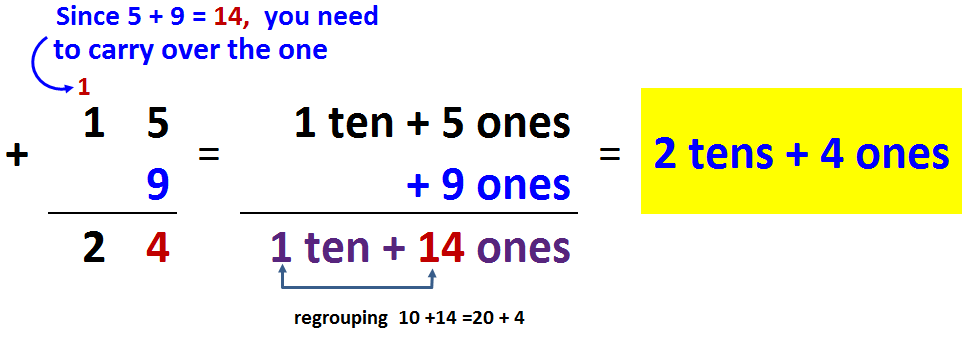Now we will consider the four basic operations with whole numbers: addition, subtraction, multiplication, and division.
Adding Whole Numbers
Addition means putting things together. The numbers to be added are called the addends. The total is called the sum. The digits are aligned in columns to ensure that like terms are added. First we add all the numbers in the ones place, then we add all the numbers in the tens place, and so on. Example:

You will need to carry a number whenever the sum of the addends is greater than nine. Example:
Usually, we write the numbers in a column format with ones, tens, hundreds, etc. aligned, then add each column beginning with the ones, and carry-over digits to the left.
Add_Integers
Missing_Addends
Subtracting Whole Numbers.
Subtraction means take away (it is opposite of addition). The answer in a subtraction problem is called the difference. Subtrahend is the number to be subtracted from another number (the minuend) minuend – subtrahend = difference
To find the difference between two numbers, sometimes you need to regroup, or borrow, from another number. Example:
When the digit in the subtrahend is larger, decompose 1 unit of higher value into 10 units of the next lower value, and regroup.
Subtract Whole Numbers
Reverse_Subtraction
Add and Subtract Whole Numbers
Solving Equations with Whole Numbers
Solving Equations by Addition or Subtraction
Addition and subtraction are opposite operations, so you can use one to check the other. If A + B = C, then C – B = A
Word Problems – Using Whole Numbers
Write your own word problem:






